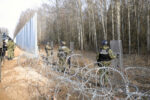Safety equipment plays a fundamental role in protecting individuals from various occupational risks. Designed to minimize potential dangers, these devices aim to preserve the health and safety of workers. Whether in an industrial setting, on construction sites, or in specific environments, Personal Protective Equipment (PPE) provides an essential barrier against accidents and injuries. The proper use of this equipment not only ensures employee safety but also contributes to a calm and efficient working environment.
Safety equipment plays a crucial role in individual protection in both professional and personal environments. It represents an essential barrier against various hazards, whether mechanical, chemical, or biological. The importance of these devices cannot be underestimated, as they not only help prevent injuries but also optimize working conditions.
Personal Protective Equipment (PPE) is designed to minimize exposure to risks. For example, in environments where chemicals are used, wearing gloves, safety goggles, and respiratory masks is crucial to avoid serious injuries or long-term illnesses. These protections ensure that workers operate in a safer environment, significantly reducing the rate of incidents.
Another fundamental aspect of safety equipment is its ability to enhance employee confidence. When personnel are properly equipped, they feel safer and, consequently, are able to focus fully on their tasks. This has a direct impact on productivity: a safe environment promotes better performance and reduces work stoppages due to accidents.
In many sectors, particularly those related to construction or industry, the nature of the tasks performed exposes workers to considerable physical hazards. For this reason, adhering to safety standards is imperative. The Labor Code effectively requires employers to provide appropriate PPE and ensure that its use is understood by every team member.
Training also plays a key role in the effective use of this equipment. It is essential that employees are trained in good safety practices, including the proper use of each type of PPE. Adequate training ensures that every worker is aware of the risks and knows how to protect themselves against them.
Safety jackets, helmets, as well as hearing and respiratory protections are just a few examples of essential PPE. Each device is created to address specific dangers. Therefore, it is crucial to choose equipment suitable for each work context. For instance, the choice of a protective helmet will depend on the environment in which the wearer operates, whether it be a construction site or a machining workshop.
As technologies advance, safety equipment is also becoming more sophisticated. For example, innovations in materials have led to the creation of fire-resistant, abrasion-resistant clothing suitable for the most extreme conditions. These advancements contribute significantly to improving the level of safety, making work safer and more comfortable.
Finally, beyond the professional environment, safety equipment is equally essential in daily life. Whether during leisure activities such as cycling or rollerblading, wearing helmets, elbow pads, and knee pads is fundamental. This clearly illustrates the idea that safety is omnipresent and should be integrated into all facets of our existence.
For more in-depth information on modern safety systems, explore articles such as What is an alert system and how does it revolutionize our safety? or How does technology transform air safety?.
Frequently Asked Questions about Safety Equipment
Q: Why is safety equipment essential?
A: Safety equipment is crucial as it protects workers from various risks, whether chemical, mechanical, or biological. By ensuring a safe working environment, it contributes to the prevention of accidents and occupational diseases.
Q: What types of personal protective equipment (PPE) are recommended?
A: Personal protective equipment includes helmets, safety goggles, gloves, respiratory masks, and hearing protection. Their choice depends on the specific risks associated with the professional activity.
Q: How do PPE reduce occupational risks?
A: PPE minimize exposure to hazards by creating a barrier between the worker and the risk. For example, a helmet protects against impacts, while gloves safeguard against cuts and burns.
Q: What regulatory standards govern PPE?
A: PPE must comply with specific standards defined by the Labor Code. These standards ensure that equipment meets safety and effectiveness criteria to protect users.
Q: Why is it important to receive training on the use of PPE?
A: Adequate training allows workers to understand how to correctly use PPE, maintain their effectiveness, and apply best safety practices, thereby reducing the risk of accidents.
Q: Are PPE only necessary in hazardous environments?
A: No, even in environments considered relatively safe, wearing PPE can prevent unforeseen accidents and promote a culture of safety within the organization.
Q: What is the responsibility of employers regarding PPE?
A: Employers are required to provide appropriate PPE, ensure its proper maintenance, and guarantee that their employees are trained in its use to ensure safety in the workplace.
























